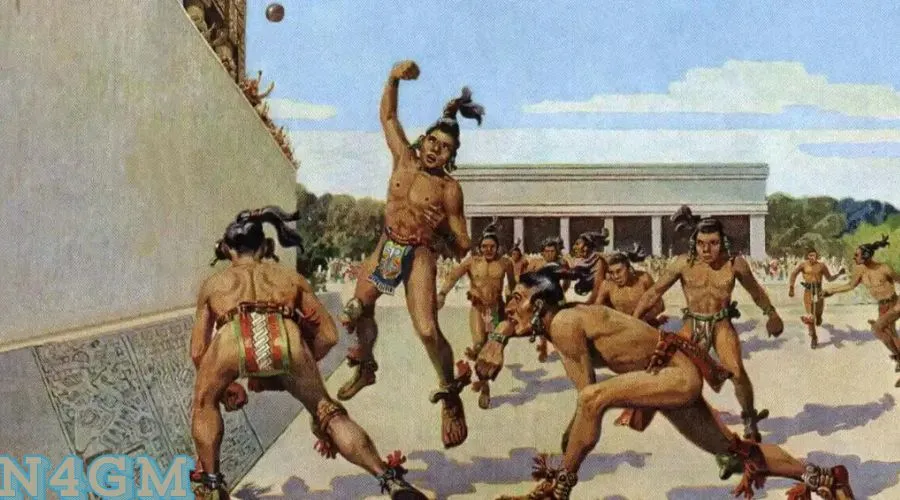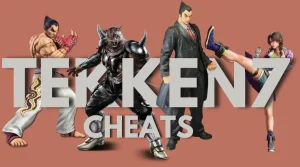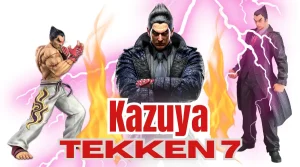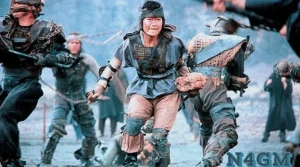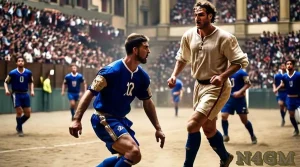When I first learned about Pasuckuakohowog, I was intrigued. As a soccer fan, I was thrilled to find its deep history in American culture. It felt like uncovering a hidden gem.
This ancient sport is more than just a game; it’s a significant part of Native American tradition. The game is a predecessor to modern soccer, yet it is rich with cultural and spiritual meaning.
Its rich history offers insight into American tribes’ cultures. Through this article, I want to share my insights on this sport, its origins, gameplay, rules, and cultural significance.
What Is Pasuckuakohowog?
This is an ancient Native American game. It was played by tribes in the northeastern U.S. The name itself means “they gather to play ball with the foot.” This game was a significant part of American culture and tradition.
It involved a large number of players and was played on a large field. While game rules vary by tribe, the goal was to score by getting a ball into the opponent’s goal.
Origins Of The Sport
Pasuckuakohowog was mainly played by tribes like the Narragansett, Wampanoag, and Mohegan. These tribes lived in areas that are now New England, New York, and the mid-Atlantic states.
The game was played during peaceful times and community gatherings. It was both fun and ceremonial. The game is very old, dating back to before European settlers came to North America. It was more than just a sport. It helped bring people together, show bravery, and solve conflicts.
The game was played on a big field, sometimes miles long, with hundreds of players. This large-scale play showed the importance of working together, a theme still seen in many sports today.
The Essentials: Field, Equipment & Gameplay
1. Playing Field
This game was played on a vast, open field. Unlike today’s regulated soccer fields, its playing area had no fixed dimensions. The field could stretch for miles.
The goals were often far apart. The goalposts were often natural landmarks, like trees or rocks. So, each game was unique, depending on the terrain.
2. Equipment
It was played with minimal equipment. Only a tightly bound ball was required. It had to be made from animal hides stuffed with grass, hair, or other soft materials.
The size of the ball varied, but it was usually larger and heavier than a modern soccer ball. The ball’s construction made it durable enough to withstand the game’s rigors. It could last for hours.
3. Gameplay & Rules
- Structure
- Minimal Rules: Unlike modern soccer, it had very few restrictions on gameplay.
- Violent Nature: The lack of rules contributed to a more aggressive and violent style of play.
- Player Safety: The absence of safety regulations often leads to injuries during matches.
2. Player Attire
- Ornaments and War Paint: Players adorned themselves with decorative items and war paint.
- Purpose of Decoration: These decorations had two goals. They aimed to improve the appearance and to hide players from revenge.
3. Scoring & Goals
- Kicking the Ball: The primary objective was to kick the ball into the opposing team’s goal.
- Goal Distance: The goals were a mile apart. This made the game demanding and required high stamina.
4. Match Duration
- Length of Matches: Games could last for several hours, often extending into the next day.
- Physical Challenge: The extended duration added to the physical challenge faced by players.
5. Community & Celebration
- Post-Game Feasts: After each match, both teams would celebrate together.
- Reinforcement of Bonds: These feasts helped strengthen social ties among players and tribes.
Comparison With Modern Soccer
When I think about Pasuckuakohowog, I can’t help but compare it to modern soccer. The two sports are similar. They both use a ball and aim to score goals. But, there are significant differences.
| Aspect | Pasuckuakohowog | Modern Soccer |
| Physicality | Highly physical with no set rules about tackling or contact; injuries common | Strict rules to protect players’ safety |
| Playing Field | No defined boundaries; could span vast distances | Defined playing field with fixed dimensions |
| Cultural Significance | Deep spiritual and cultural importance for Native Americans | Cultural importance but less spiritual significance |
Cultural Significance
- Cultural and Spiritual Importance: It was vital to the tribes’ culture and spirituality. It was often linked to seasonal festivals and key community events.
- Honor for the Community: The game win honored the whole village, not just the players.
- Proving Strength and Bravery: The game let young men show their strength, agility, and bravery. Its physical nature made it a test of skill. These traits were highly valued in Native American societies.
- Conflict Resolution: The game was sometimes used to resolve disputes. It was a peaceful means to do so, either between tribes or within a community. The victors earned the right to claim their demands.
Decline And Rediscovery
- Decline: European settlers caused a decline in American traditions, including Pasuckuakohowog. European sports and disruptions in Native American life made the game unpopular. By the 19th century, it had mostly faded from memory.
- Revival: Recently, there is new interest in this game. It is a way to celebrate Native American culture and study its history. Scholars and cultural groups are working to revive the game’s memory. They see it as a predecessor to modern sports like soccer.
Importance Of Preserving
In my opinion, preserving this sport is crucial. This ancient game is not just a precursor to soccer; it’s a vital part of Original American history. By learning about and celebrating it, we can honor the Native American tribes who played it.
Moreover, it offers a unique perspective on the origins of soccer. It shows us that the sport we love today has deep roots in different cultures around the world. By understanding these roots, we can appreciate the global and historical significance of soccer.
The Future Of The Sport
Looking ahead, I believe that it has the potential to gain more recognition. As interest in sports history grows, this game has a unique story that deserves to be told.
Education is key to ensuring that this is not forgotten. Teaching younger generations about this ancient game can keep the tradition alive. Schools, museums, and cultural organizations can help. They can add this game to their programs.
FAQs
The only equipment used was a tightly bound ball made of animal hides or leather.
Q.2 Why did it decline?
European settlers caused a decline in many Native American traditions, including this. The settlers brought their own games and sports, which eventually replaced it.
Q.3 How was it played?
It was played on beaches or clearings with goals about a half-mile wide and set one mile apart. Up to 500 people could play at one time. The game was very physical and aggressive.
Conclusion
This sport is a remarkable part of American history. It showcases the cultural significance of sports in fostering community and resolving conflicts. My research on this topic showed how such games shaped tribal social interactions.
The legacy of this game reminds us that competition and community are timeless. They transcend generations and cultures. As soccer grows in popularity, we must remember its roots.
It reminds us of the rich cultures that shaped modern sports. Knowing the game’s origins lets us appreciate it more. It connects us to the past while we enjoy the present.

